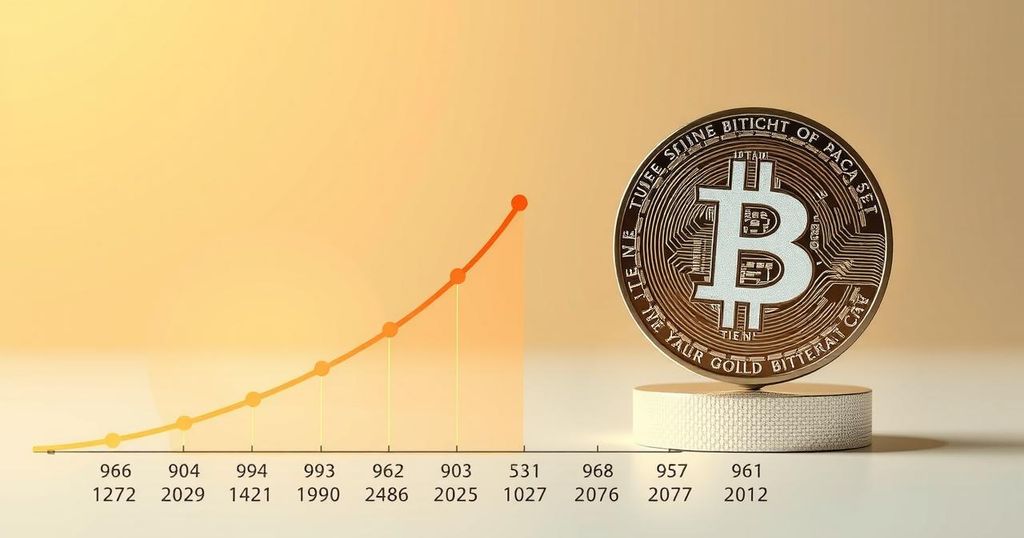Analyzing the Recent 47K BTC Outflow and Its Impact on Bitcoin’s Market
Bitcoin has experienced a significant outflow of 47,000 BTC, which raises questions about its effects on supply and price. This event fits into a broader trend of decreasing exchange reserves, which historically has led to accumulation and potential price increases. Despite this outflow, Bitcoin’s price remains stable, indicating minimal immediate market disruption.
Bitcoin has recently witnessed a substantial outflow of 47,000 BTC, prompting considerable discussion within the cryptocurrency community. Stakeholders are questioning whether this exodus signifies a true supply shock or merely reflects typical market fluctuations. Historically, large outflows have been associated with long-term accumulation, likely constraining supply and potentially leading to upward price movements. Thus, a thorough examination of on-chain data and Bitcoin’s price behavior is warranted.
This 47,000 BTC withdrawal marks the largest outflow since 2022, continuing a trend of significant outgoing transactions for Bitcoin. Notably, the overall flow of BTC indicates a consistent decline in exchange reserves. However, this trend alone does not definitively imply a supply shock; rather, further analysis is needed to contextualize these movements.
An analysis of Bitcoin’s Exchange Reserve reveals a downward trajectory in BTC held on exchanges, which decreased from over 3 million BTC in mid-2024 to approximately 2.45 million BTC by February 2025. This decline suggests that investors are increasingly transferring their holdings to private wallets, indicating a shift toward long-term storage. A reduction in circulating supply on exchanges typically leads to decreased availability for immediate market sale.
Despite the considerable 47,000 BTC outflow, Bitcoin’s price has maintained relative stability around $96,152. This price firmness suggests that the immediate market impact of the outflows has been muted, which is unexpected. Moreover, analysis of Bollinger Bands indicates that Bitcoin’s price has been consolidating within a range of $94,935 and $107,638, with the 50-day moving average acting as a short-term resistance point.
Additionally, data from Glassnode indicates growing speculation in the futures market, as Bitcoin Open Interest surged to nearly $60 billion in January and currently stands at approximately $44 billion. An increase in Open Interest typically signifies traders anticipating price movements, with some speculating on an upcoming supply squeeze. However, excessively positive funding rates could indicate an over-leveraged market, heightening vulnerability to potential pullbacks.
The recent outflow of 47,000 BTC fits within the larger context of decreasing exchange reserves, leading to a limited immediate market impact. The absence of sharp price movements alongside indications of wallet modifications suggest that this could be part of a longer-term accumulation strategy rather than a sudden supply shock.
Nevertheless, should the outflow trend persist, along with rising whale activity in the market, the potential for a supply squeeze may emerge in the forthcoming months. This scenario could result in upward price pressure as exchange supplies continue to diminish.
In conclusion, while the recent 47,000 BTC outflows are indeed significant, they do not appear to indicate an immediate supply shock. The stability in Bitcoin’s price and the prevailing trend towards long-term private storage suggest that these movements are more a reflection of an ongoing accumulation strategy. However, persistent outflows could likely culminate in a supply squeeze, gradually elevating Bitcoin’s price over time.
This article addresses the recent significant outflow of 47,000 BTC from exchanges, contextualizing its implications for Bitcoin’s supply and price stability. Given Bitcoin’s historical patterns, large outflows often correlate with accumulation strategies, which can loosen supply dynamics. Analyzing exchange reserves and market behavior surrounding this outflow is critical for predicting future price movements in the cryptocurrency market.
This analysis indicates that Bitcoin’s recent outflow of 47,000 BTC is substantial yet not indicative of an immediate supply shock. The stability of Bitcoin’s price and ongoing accumulation trends suggest this is part of a broader strategy rather than a drastic market disruption. However, should outflows continue, they may lead to a supply squeeze, incrementally affecting Bitcoin’s price positively in the future.
Original Source: thecurrencyanalytics.com








Post Comment